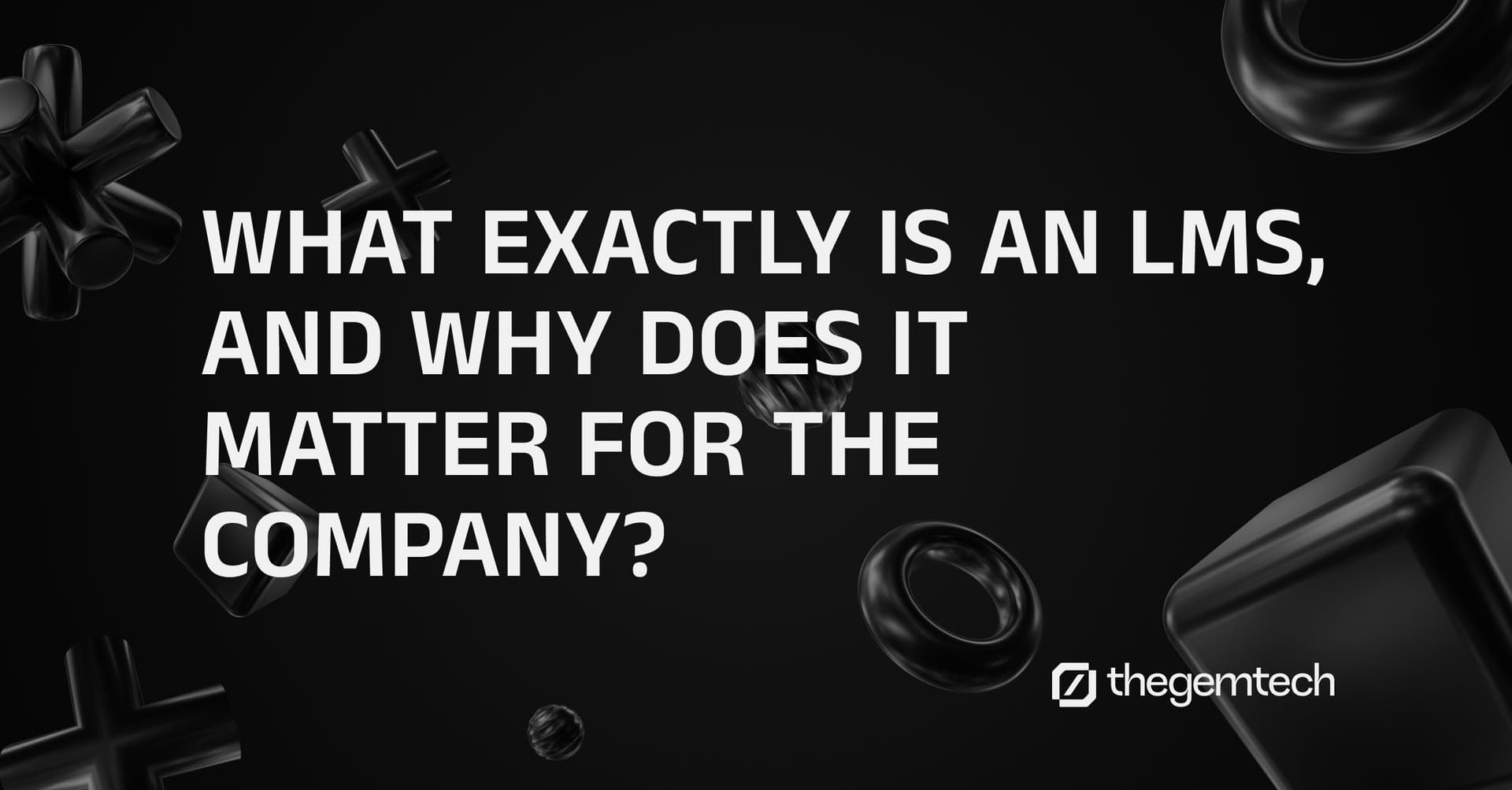What Exactly Is a Learning Management System (LMS), and Why Does It Matter?

Let’s face it: in today’s fast-moving world, businesses need a quick and reliable way to train their people—without throwing everyone into a physical classroom every time there’s a new policy or product update. That’s where a Learning Management System (LMS) comes in. Think of it like your own digital training ground: a platform for sharing knowledge, tracking progress, and making sure no one’s left behind.
Getting Familiar with an LMS
An LMS is basically software that hosts courses, files, and videos—and keeps an eye on how well people are doing with their training. Whether it’s brushing up on the company handbook or mastering cutting-edge industry skills, an LMS brings all that info together in one “home base” for learning.
Some handy features you might see:
- Course Management: Design, assign, and manage training modules in one place.
- Progress Tracking: Get a clear view of who’s on track and who needs extra help.
- Quizzes & Assignments: Check whether the material is really sinking in.
- User Management: Give admins, trainers, and learners the specific tools they need.
- On-the-Go Access: With cloud-based options, anyone can log in anytime, anywhere.
Why Bother with an LMS?
- Consistent Training: Everyone gets the same material, reducing confusion like “Wait, my manager said something different.”
- Scalability: Whether you have a small team or a global workforce, an LMS is easier to scale than in-person training.
- All-in-One Learning Hub: Keep policies, videos, FAQs, and more in one place—no more endless searching in email chains.
- Customized Learning Paths: Tailor courses to suit specific departments, roles, or skill levels.
- Informed Decisions: Analytics show what’s working (and what’s not) so you can make improvements fast.
Why It’s a Game-Changer for Corporate Onboarding & Training
1. Faster, More Efficient Onboarding
The first few weeks at a new company can be both exciting and overwhelming. An LMS simplifies this period by organizing everything—welcome materials, essential documents, team introductions, and compliance training—in one clear and accessible location. New hires can learn at their own pace while still checking off all the crucial “must-do” items.
2. Consistency Across Departments & Locations
If you’ve ever tried to coordinate new-hire training across multiple offices or even different countries, you know how quickly things can get complicated. With an LMS, every new employee receives the same foundational training, regardless of where they’re located or who their manager is. No more worrying that one office is out of the loop.
3. Boosts Engagement and Retention
Onboarding isn’t just about dumping information—it’s about creating a positive experience from day one. Interactive elements like quizzes, videos, and even gamification can make training feel more engaging and less like a chore. Engaged employees are more likely to stick around, reducing turnover and all the costs that come with it.
4. Real-Time Monitoring & Feedback
Managers can spot early on if someone’s having trouble with a specific module—maybe they missed a quiz question or seem stuck on certain content. Quick feedback not only helps the individual employee but also helps refine the overall onboarding program. Over time, you’ll develop a well-oiled process that consistently brings people up to speed.
5. Seamless Transition to Ongoing Training
Onboarding is just the start; continual development is essential in a fast-paced corporate world. An LMS bridges the gap, making sure that once employees are settled, they can continue to grow through upskilling, certifications, or role-specific learning paths—without needing a new system or a separate set of logins.
Who actually would need an LMS?
- Companies & Enterprises: From onboarding new hires to rolling out ongoing training, LMS platforms make it easy.
- Schools & Universities: For digital classrooms and remote learning assignments.
- Professional Associations: Ideal for offering official certification courses and more.
- Nonprofits & Government Bodies: Ensures volunteers, staff, or partners all receive the same high-quality info.
What are the perks of having an LMS?
- Better Engagement: Interactive content keeps learners involved.
- Cost Savings: No more travel, printed materials, or repeated in-person sessions.
- Flexibility & Time Savings: Employees learn at their own pace—so daily operations aren’t heavily disrupted.
- Real-Time Updates: If policies or regulations change, you can update your training in a snap.
- Solid Record-Keeping: Handy for proving compliance and tracking certifications.
So… What Exactly Does an LMS Do?
- Content Creation and Upload:
- An LMS gives you a digital “container” to store all sorts of training materials—documents, videos, quizzes, you name it.
- You can create entire course modules and arrange them in a logical sequence, so your people know exactly where to start.
- User Management:
- Administrators decide who sees what. You can categorize learners by department, role, or even location.
- Need the finance team to complete a compliance course by Friday? Done. Want managers to review the new leadership training? Easy.
- Enrollment & Onboarding:
- Whether it’s a new employee or an existing team member exploring upskilling, learners can be auto-enrolled or simply invited by the admin.
- Some LMS platforms allow users to choose courses based on their interests or career goals.
- Learning Journey Tracking:
- Think of it like a GPS for learning. The system tracks everything: course completion, quiz scores, and time spent on each module.
- This data helps managers see who might be falling behind and who’s on a roll.
- Assessments & Feedback:
- Built-in quizzes, polls, and surveys help folks learn by doing—rather than just passively watching a video.
- Immediate feedback (sometimes with a friendly nudge or a celebratory badge) keeps learners motivated.
- Reporting & Analytics:
- Fancy charts and graphs show how your team is progressing over time.
- Use these insights to fine-tune training materials or update content that might be a bit stale.
- Regular Updates:
- Because it’s all digital, new info is just a few clicks away.
- Once you update the platform, everyone sees the latest version—no frantic emails with revised attachments needed!
Essential LMS Features to Level Up Your Training
- Easy-to-Use Interface
- A clean, intuitive design is key. If your learners can’t figure out how to navigate the system, no amount of fancy content will save it.
- Built-In Content Creation (preferably with AI ready to help)
- Creating slides, quizzes, or interactive lessons directly within the LMS saves time (and keeps you from juggling multiple apps).
- Mobile Compatibility
- Everyone’s on the go these days. Let folks access training on their phones or tablets while commuting or grabbing a latte.
- Gamification
- Leaderboards, badges, and points might sound goofy at first—but trust us, they keep people coming back for more.
- Progress Tracking & Reporting
- Real-time dashboards let managers see who’s acing their courses—and who needs a gentle reminder.
- Automation & Integrations
- Automated email reminders can keep your team on schedule. Bonus points if your LMS integrates with HR or CRM systems to share data and save you from retyping info.
- Compliance Management
- For heavily regulated industries, built-in compliance tracking is priceless. You’ll thank yourself later when audits roll around.
- Customization & Branding
- Make it yours! Tailor the look and feel to your company brand so learners feel right at home—this is where TheGemTech can really shine by helping you build a cohesive, on-brand experience.
- Security & Data Privacy
- Learners need to trust the platform. Top-notch security keeps personal data out of the wrong hands.
- Also great for ensuring you’re meeting any legal or regulatory requirements around data protection.
How We Handle LMS Implementation at GeM Tech?
- Brand-Friendly Customization
We tailor the look, feel, and overall experience of the LMS to blend seamlessly with your organization’s identity and goals. - Expert Guidance & Ongoing Support
From setup to course creation and user training, we’ve got you covered. If you need a hand later on, we’re still here to help refine or expand what you have. - Safety & Compliance
Data security isn’t a side note. We follow industry guidelines and use best practices to protect your information and keep your system compliant. - Constant Improvement
By analyzing performance metrics and user feedback, we help fine-tune the platform so it stays relevant and effective over time.
Final Word
When it comes to corporate onboarding and training, an LMS can be a total game-changer. It’s not just about saving time or cutting costs—though it does both—but about creating a learning environment that helps new hires feel supported from the get-go and empowers existing employees to keep growing.
At GeM Tech, we’ve seen how a well-planned LMS can transform a company’s onboarding process into a warm, efficient, and results-driven experience. Curious to learn more? Reach out to our team. We’d love to show you how our LMS solutions can boost morale, productivity, and overall success for your organization.
More insights
View All
What Are the Benefits of a Cloud LMS for teams training?
Web development has come a long way from simple static pages to dynamic and highly interactive applications. Over the years, technologies have evolved, enabling developers to build faster, more efficient, and scalable solutions.